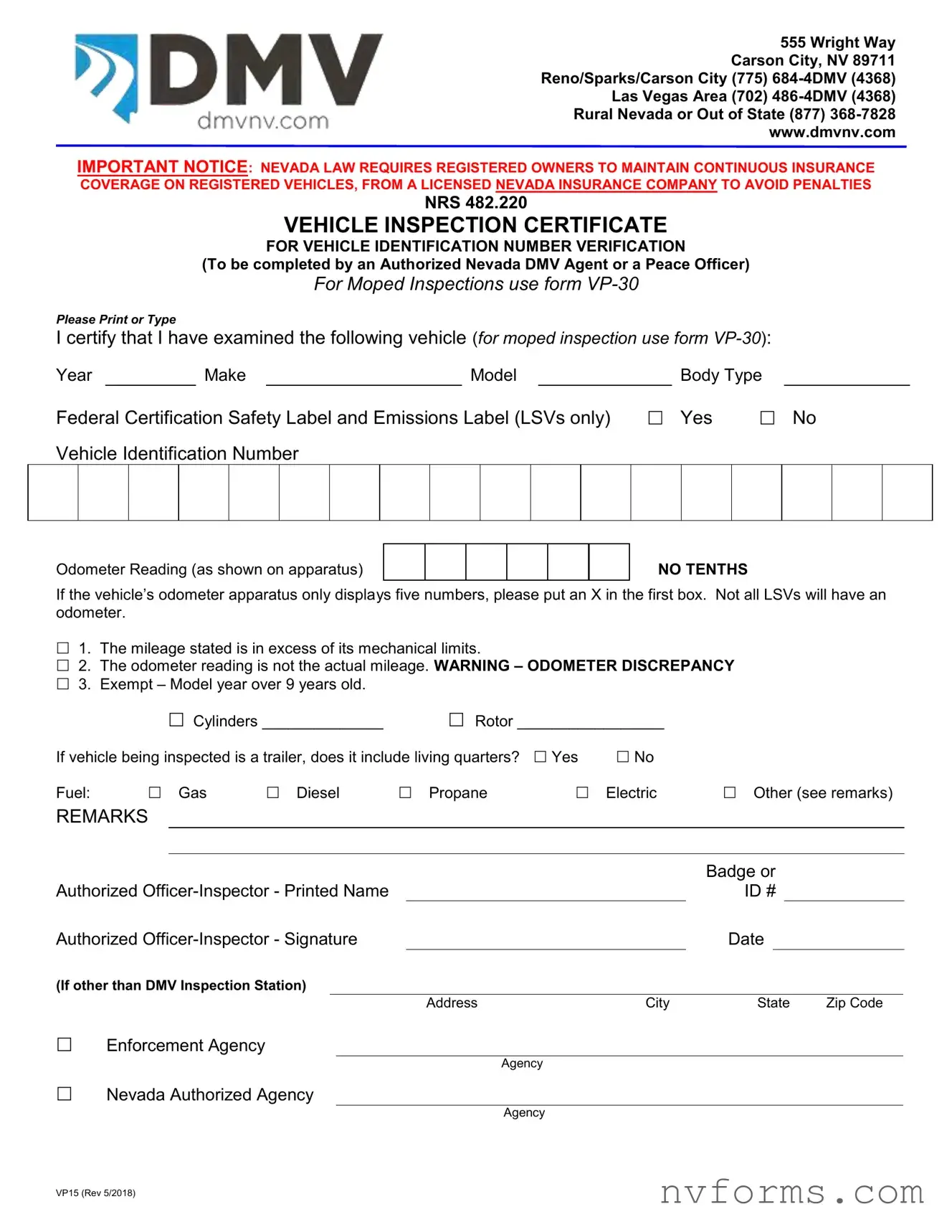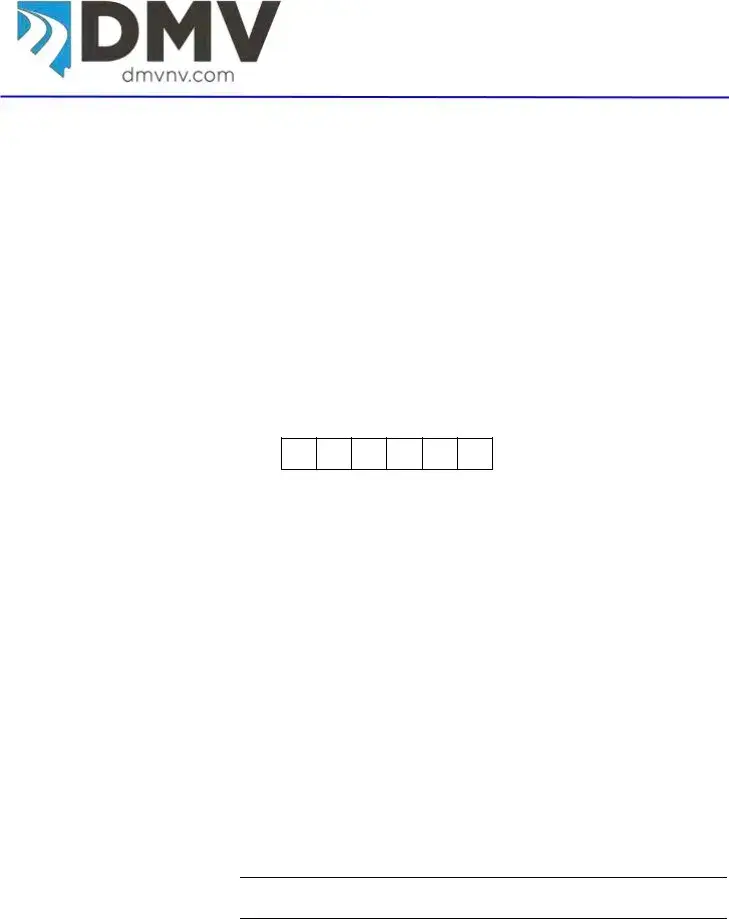The process of vehicle registration and ensuring road safety in Nevada includes a crucial step: the Vehicle Inspection Certificate form. This form, integral for verifying the vehicle identification number (VIN), underscores Nevada's commitment to maintaining a database of legally compliant vehicles. By requiring this certificate, Nevada enforces a layer of protection for vehicle buyers and strengthens the fight against vehicle theft and fraud. It's mandatory for vehicles to be examined by an Authorized Nevada DMV Agent or a Peace Officer, capturing essential details such as year, make, model, body type, and the presence of federal certification labels. Additionally, the form addresses odometer readings—an essential aspect in assessing a vehicle's wear and tear—and distinguishes between gas, diesel, propane, electric, and other types of fuel, reflecting the state's inclusive approach to different vehicle technologies. Nevada law emphasizes continuous insurance coverage from a licensed Nevada insurance company for registered vehicles, underscoring the seriousness of maintaining vehicle integrity and legal compliance. Moreover, the form provides for specific inspections, like that for mopeds, showcasing Nevada's attention to diverse vehicle types. Through this comprehensive approach to vehicle inspection, Nevada not only promotes road safety but also guards against potential legal and financial complications arising from vehicle ownership discrepancies.

